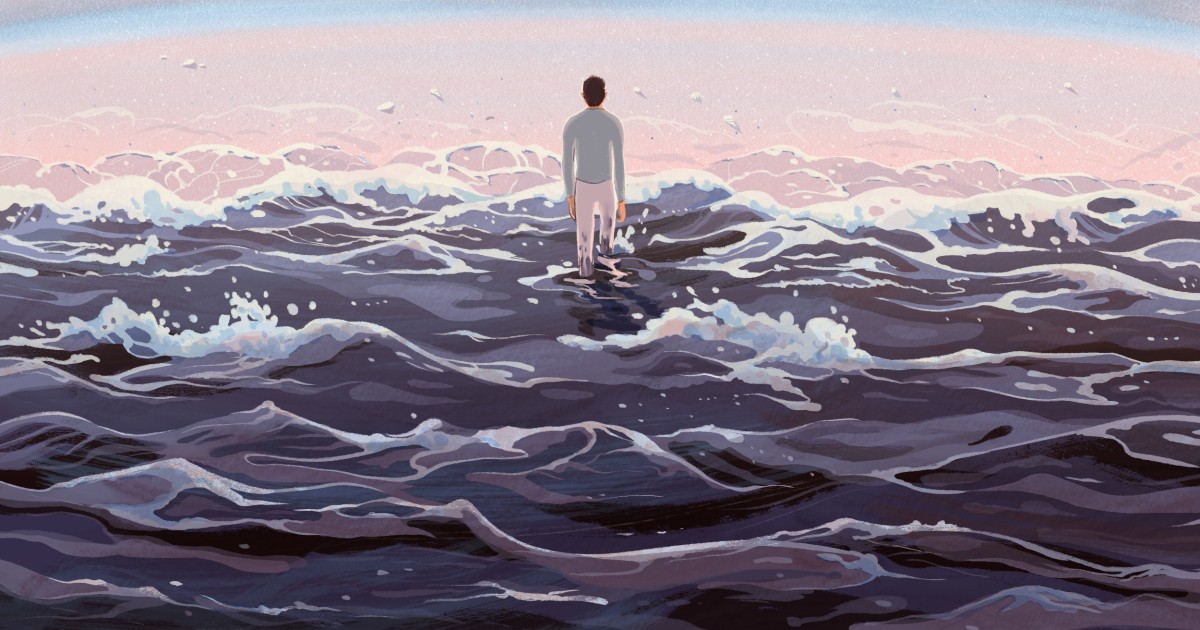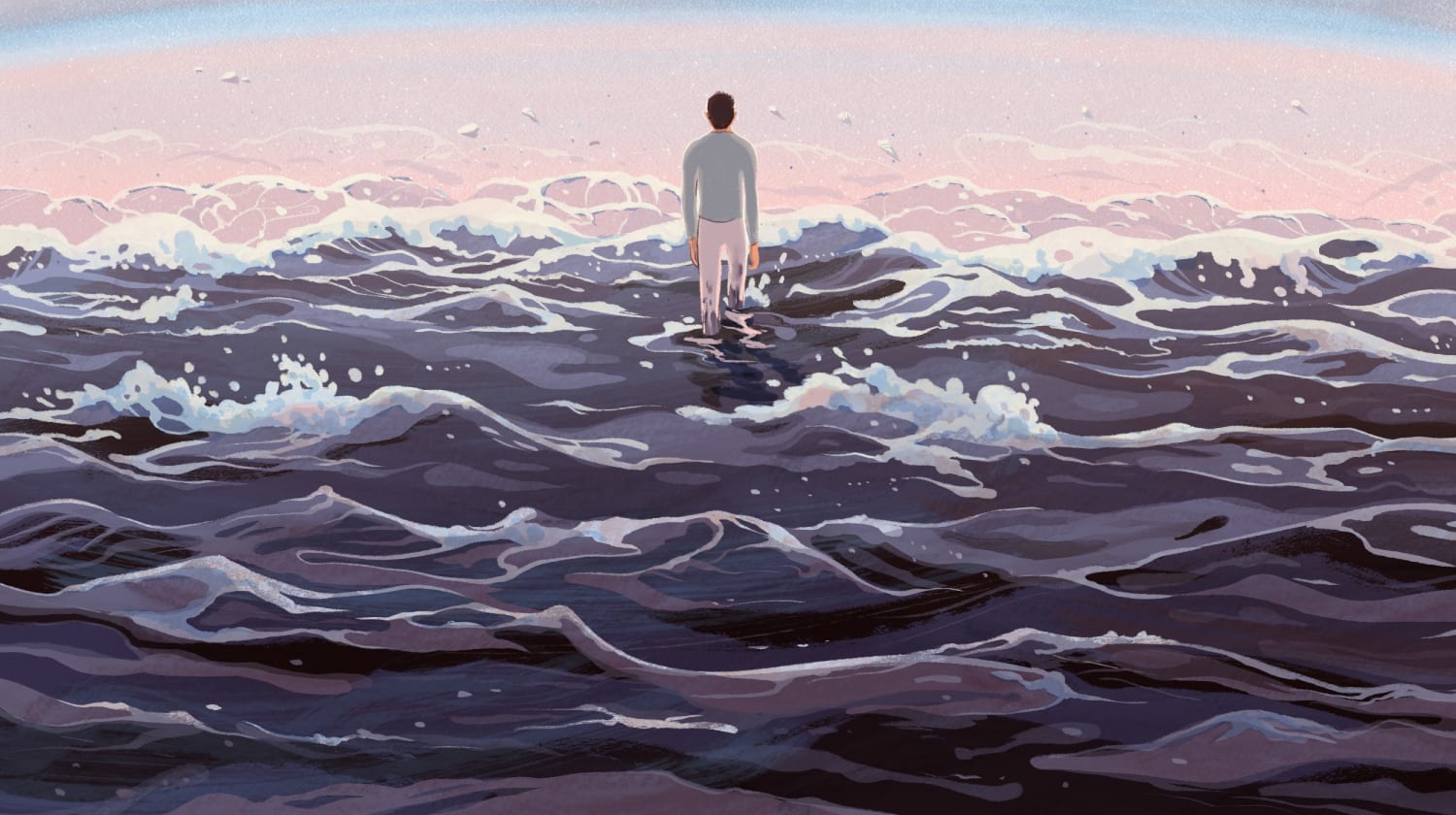
Though 2020 is finally over and it feels like it’s time to look ahead — to leave the bad stuff behind —moving on is not nearly as easy as we often think it should be.
Research has shown that transitions are often hard because they involve letting go of old concepts of who we are and embracing new ones. No matter how positive a new version of oneself might seem — and no matter how painful the old one was — it can be frightening to give up a familiar identity. The perfect example is someone who loses weight, gets lots of compliments, and then is discombobulated by and uncomfortable with the new image of who they are to others.
Still, if you are a glass-half-full kind of person, you may be frustrated by family or friends who focus on the negative. It can be difficult to understand why some people have trouble letting go of grief, negativity and pessimism or cling to the fear that things will be bad forever — hanging on to traumas big and small — even when things start to improve.
Like many psychotherapists, I often work with people who are unable to take the plunge from negativity to hope because they have not come to grips with painful experiences from their past. But recent research has also concluded that some of us are simply born more optimistic — meaning that there are genetic factors in how likely we are to see things in a positive light. Still, there are ways for all of us to become more hopeful — or at least move past the traumas of 2020.
The goal is not to become a new person, but instead to become a more complex one.
Freud described “the compulsion to repeat” as the human psyche’s attempt to master painful or traumatic experiences from the past, via do-overs that we act out without realizing what we are doing. We keep living out old pain in new situations, often with hidden hope that it will be different this time. In psychoanalytic training, we also learn that people only stop repeating old patterns when they understand what they’re doing. But understanding is only one step (albeit an important one) on a difficult path to genuine transformation.
We now also know that the body plays an important role in the struggle to change: our genetic makeup, life experiences and trauma can contribute to messages between our bodies and our minds. In “The Body Keeps the Score,” Bessel van der Kolk explained that even when pain and anxiety have ended, we store the emotions in our bodies. Henry Krystal, also an early innovator in trauma theory, wrote in “Integration and Self-Healing” that trauma physically freezes our minds, making logical thought impossible.
And remaining pessimistic even in the face of good things can serve an important adaptive function, as well. In the book “Doing Psychotherapy,” self-psychologist Michael Basch wrote of a timid young woman whose father always put down her tentative steps into new situations and experiences. The woman had believed that her father had no faith in her; but as the psychoanalysis progressed, she and Basch realized that her father was not trying to bring his daughter down, but instead trying to protect her from the kinds suffering and disappointment he had experienced.
The story shed a different light on my own dad, who always looked at the dark side of everything. After reading Basch’s clinical material during my years of study, I asked about his pessimistic attitude. He told me, “Life is a lot nicer when you expect the worst and are surprised by something good, than when you expect good things and are surprised by something bad.”
It can be difficult to understand why some people have trouble letting go of grief, negativity and pessimism or cling to the fear that things will be bad forever.
In my work as a psychotherapist, I have heard this philosophy repeated, both in words and in the actions of many different people. For example, a young mother who was constantly worried about something bad happening to one of her children told me, “I want to always be prepared to take action if something bad were to happen.” An elderly widower said, “I never expected my wife to die before me; it was a kick in the teeth.”
In truth, some anticipation of negative events can be useful. After the early days of the pandemic, when toilet paper disappeared from grocery store shelves, many of us who normally waited until the last possible square of toilet paper to restock vowed never to be without extra in the future. The anxious mom, who was always preparing for the worst, had figured out how to deal with her children’s remote schooling long before it became a reality.
But does such preparedness protect us from having bad things happen? Of course not. Whether you are innately an optimist or a pessimist — or whether life experience has made you want to always expect the worst or not — you probably could use a more integrated perspective on moving into the new year.
It will not be all good but, hopefully, it will not be all bad — just as even this past terrible year has presumably had some good moments, even tiny ones, if you think about it.
Remaining pessimistic even in the face of good things can serve an important adaptive function, as well.
Which brings us back to how to reconcile the bad and good events of last year so that we can enjoy the changes that the new year might bring. An important part of the work is to pay attention to changes — bad and good — that the year has brought to how we view ourselves.
When I work with someone in psychotherapy, I encourage them to try to find ways to integrate the old with the new. Mindfulness practices can help by encouraging you to recognize and be open to contradictory self-images. The goal is not to become a new person, but instead to become a more complex one. For example, you can — and probably should — still be ready to look at the dangers ahead. But can you also look for moments of joy and pleasure?
And if you are trying to get a pessimistic friend or a family member to change their perspective to optimism, your best technique might be to shift your own. If you can blend some pessimism in with your optimism, you will have a much better chance of getting them to acknowledge that they, too, have a mix of feelings. They might even express some hopefulness. Just be prepared: you will probably still be more hopeful, and they will probably still weigh in on the negative side. Neither of you will become a new person in this new year, just as the world will not suddenly recuperate from the traumas of last year.
But a more integrated, complex view of what has happened and what is to come might be the antidote we all need.
More from our project on surviving 2020 and what comes next:
Source: | This article originally belongs to Nbcnews.com










